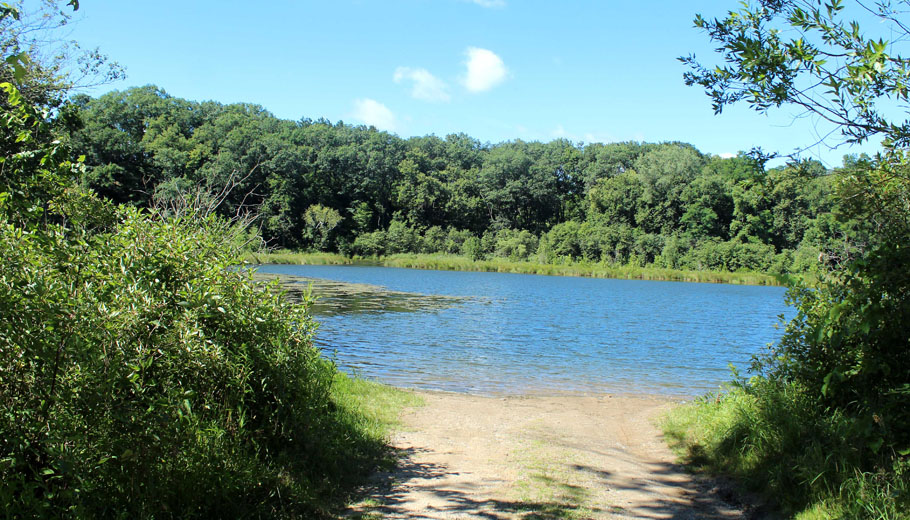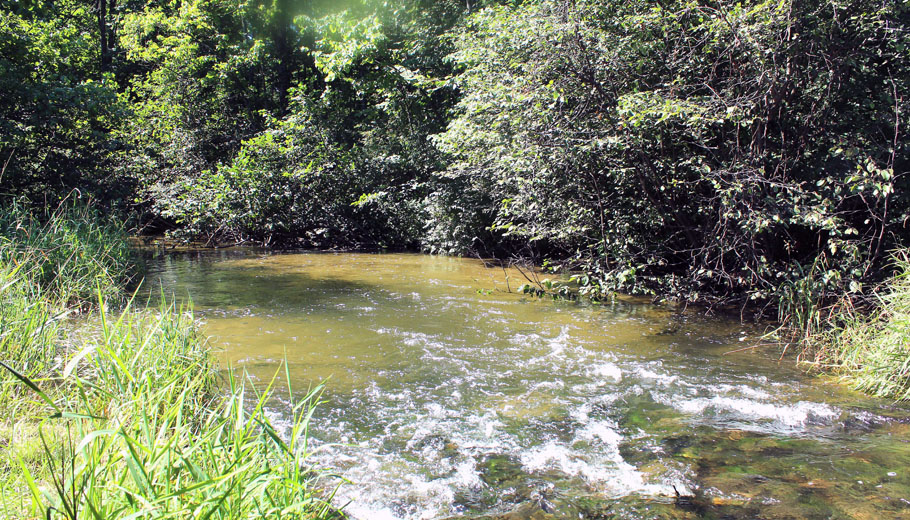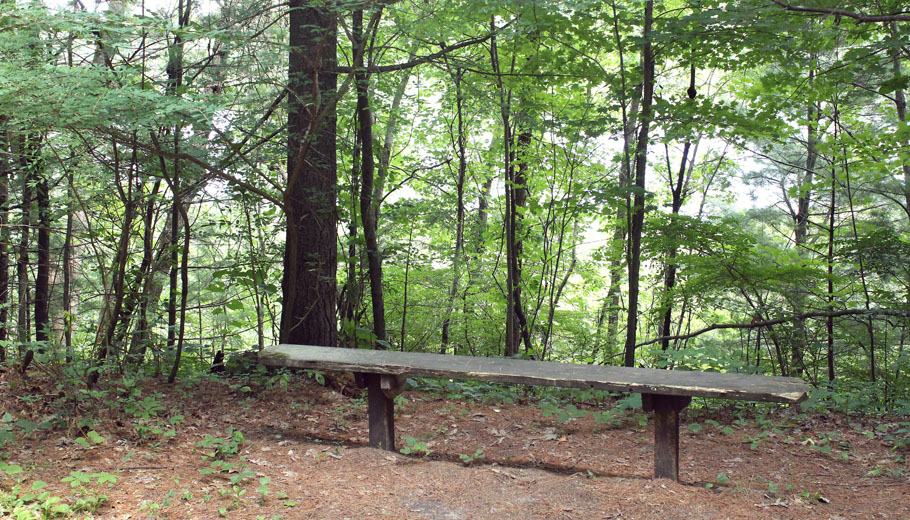
Area counties home to state natural areas
By Greg Seubert
Does Mud Lake Bog ring a bell?
How about Tellock’s Hill Woods or Poppy’s Rock?
The state Department of Natural Resources designated all three Waupaca County properties as a state natural area in 1977, 1972 and 1966, respectively, and they are three of almost 700 SNAs found in 70 of Wisconsin’s 72 counties.
Thomas Meyer, a conservation biologist with the DNR’s State Natural Areas Program, said the properties have been singled out for a good reason.
“The focus is to try to set aside the best remaining examples of Wisconsin’s native communities,” he said. “The focus is not on providing recreation like you’d find at Hartman Creek State Park, although you can in most cases hunt, fish and hike on them. This is really focused more on nature and the species that are found there.”
Waupaca County is home to eight other SNAs: Jackson Creek Woods; Keller Whitcomb Creek Woods; Little Wolf River; Mud Lake – Radley Creek Savanna; Mukwa Bottomland Forest; Myklebust Lake; Pope Lake; and Skunk and Foster Lakes.
Outagamie County has four designated SNAs, while Portage, Waushara, Winnebago and Shawano counties have 11, seven, four and six, respectively.
Pope Lake State Natural Area is located within Hartman Creek State Park and is one of several SNAs located in a state park, wildlife area or forest.
A trail through the area begins near the dam that forms Hartman Lake and crosses Rural Road. The trail, open to hiking and cross-country skiing, includes views of Pope and Marl lakes from the top of a ridge.
“State natural areas are different from state parks in that we don’t actively facilitate public access and use,” Meyer said. “It doesn’t mean you can’t go there, but we’re not going to put in a 6-foot-wide trail. There might be a little footpath or a little dock to access water, but we’re not providing picnic tables, campsites or anything like that.”
Mud Lake Bog, located northwest of Iola, is a different story.
“If you go to a place like Mud Lake Bog, there’s nothing there,” Meyer said. “There’s a parking lot and a sign and you walk out on a volunteer trail out to the bog mat, but that’s it.”
The DNR does not own about a third of the state’s SNAs, Meyer said.
“They are on properties owned by our program partners, including the federal government,” he said. “We have almost 100 state natural areas designated on the Chequamegon-Nicolet National Forest in northern Wisconsin. We also have natural areas on lands owned by The Nature Conservancy and the Mississippi Valley Conservancy.”
Appleton’s Lawrence University owns Poppy’s Rock, located a few miles south of New London off of Bean City Road.
“This is a program that actually goes back to the 1950s,” Meyer said. “Some of the conservationists at the time recognized that native plant and animal communities were starting to dwindle in places that they used to take their students.
“They said, ‘Look, we need to have some kind of program that protects the last remaining prairie, old-growth forest or unique wetland,’” he said. “They got legislation passed that created the State Natural Areas Program.”

The program includes more than 100 ecological communities, according to Meyer.
“We use science to put them into a specific classification,” he said. “There are wetlands that have alkaline soil and wetlands that have acidic soil. We have different forest types and they’re basically classified on their dominant tree species. We have about six different prairies in the state that range from wet prairies in floodplains to dry, sandy prairies like you find along the bluffs on the Mississippi and Wisconsin rivers.”
List keeps growing
The program has a process to get a property designated as a SNA.
“We have a team of ecologists that will go out to a proposed site,” Meyer said. “We may have gotten a tip from the public or maybe this piece of property is already state-owned. A property manager could say, ‘Hey, I’ve got this back 40 here and I think it has some unique habitat for different plants and animals.’
“Our ecologist goes in and does an assessment,” he said. “What they’re looking for is the percentage of native species compared to invasive species. Then, they look at evidence of past disturbance like a barbed wire fence or old plow lines to determine whether this still has viability as a native community that might be worth protecting.
“Once they’ve made their assessment, they make a proposal to our program,” he said. “If it’s on already state-owned property, we can do a designation through the master planning process. We can make a proposal to designate a state natural area within a state park, wildlife area or forest. It goes to the Natural Resources Board and the whole public hearing process. If the property is on privately owned land, we take a completely different angle. We have to enter into a voluntary agreement with the landowner. It needs to meet a set of criteria of the best of the best, the highest quality, the least disturbed.”
Most SNAs don’t get a lot of foot traffic.
One that does, however, is Parfrey’s Glen, which became Wisconsin’s first state natural area in 1952. The property, now part of Devil’s Lake State Park near Baraboo, includes a narrow sandstone ravine and several rare plant species.
“It probably gets a half-million visitors a year, unlike Mud Lake Bog, which gets less than 5,000, if that,” Meyer said. “It really depends where they are in relation to population centers and whether they’re attached to a state park or other high-visitation property.”
Online information
Information on each state natural area can be found on the DNR’s website, dnr.wi.gov, and searching “state natural areas by county.”
“There’s a map link so you can download a pdf map of the property,” Meyer said. “That is the place to go. I can’t think of any other place that will get folks information on state natural areas.”
Unlike popular state parks such as Peninsula, Devil’s Lake and Copper Falls, most people are unaware of state natural areas, Meyer said.
“People have never heard about many of them,” he said. “We’re protecting these not so much for the public to access and recreate on as we are to protect the unique natural values that are there. As a result, some of them are out in the middle of nowhere and if you want to get to them, they are truly hidden.
“You have to jump in a canoe and go downstream 2 miles to get to the Mukwa Bottomland Forest in Waupaca County,” he said. “You can’t get to it by land and once you’re there, you have to appreciate the fact that you’re in this nature preserve that has a bunch of big, old trees that have never been logged and you have to appreciate it for that aspect.
“I think 95% of the time, the effort is worth it,” he added. “I spent two hours slogging through this god-awful, insect-infested swamp to get to some of the natural areas I’ve been to. It’s really nice, but was it worth the journey? For me, it usually is because I’m a trained ecologist and I like plants and animals. For some people who are maybe looking for the ‘wow’ factor and wanted an easier access, they might feel a little disappointed. You have to have the right attitude going into some of these places, that’s for sure.”

Natural areas found in six local counties
Nearly 700 properties throughout Wisconsin have been designated as a state natural area.
They include:
Waupaca County
• Jackson Creek Woods.
• Keller Whitcomb Creek Woods.
• Little Wolf River.
• Mud Lake Bog.
• Mud Lake – Radley Creek Savanna.
• Mukwa Bottomland Forest.
• Myklebust Lake.
• Pope Lake.
• Poppy’s Rock.
• Skunk and Foster Lakes.
• Tellock’s Hill Woods.
Outagamie County
• Deer Creek Tamarack Bog.
• Hortonville Bog.
• LaSage Bottoms.
• Shaky Lake.
Waushara County
• Bass Lake Fen.
• Bohn Lake.
• Karner Blue Meadow.
• Lunch Creek Wetlands.
• Mecan Springs.
• Plainfield Tunnel Channel Lakes.
• Upper Fox Headwaters.
Portage County
• Bradley Creek Swamp Conifers.
• Buena Vista Quarry Prairie.
• Buena Vista Prairie Chicken Meadow.
• Dewey Marsh.
• Emmons Creek Barrens.
• Flume Creek Cedars.
• Little Bear Hemlocks.
• New Hope Pines.
• Mead Conifer Bogs.
• Pickerel Lake.
• Upper Little Wolf.
Winnebago County
• Koro Prairie.
• Oshkosh-Larsen Trail Prairies.
• Rush Lake.
• Winchester Meadow.
Shawano County
• County K Woods.
• Jung Hemlock-Beech Forest.
• Kroenke Lake.
• Navarino Cedar Swamp.
• Navarino Sedge Meadow.
• Wolf River Bottoms.
